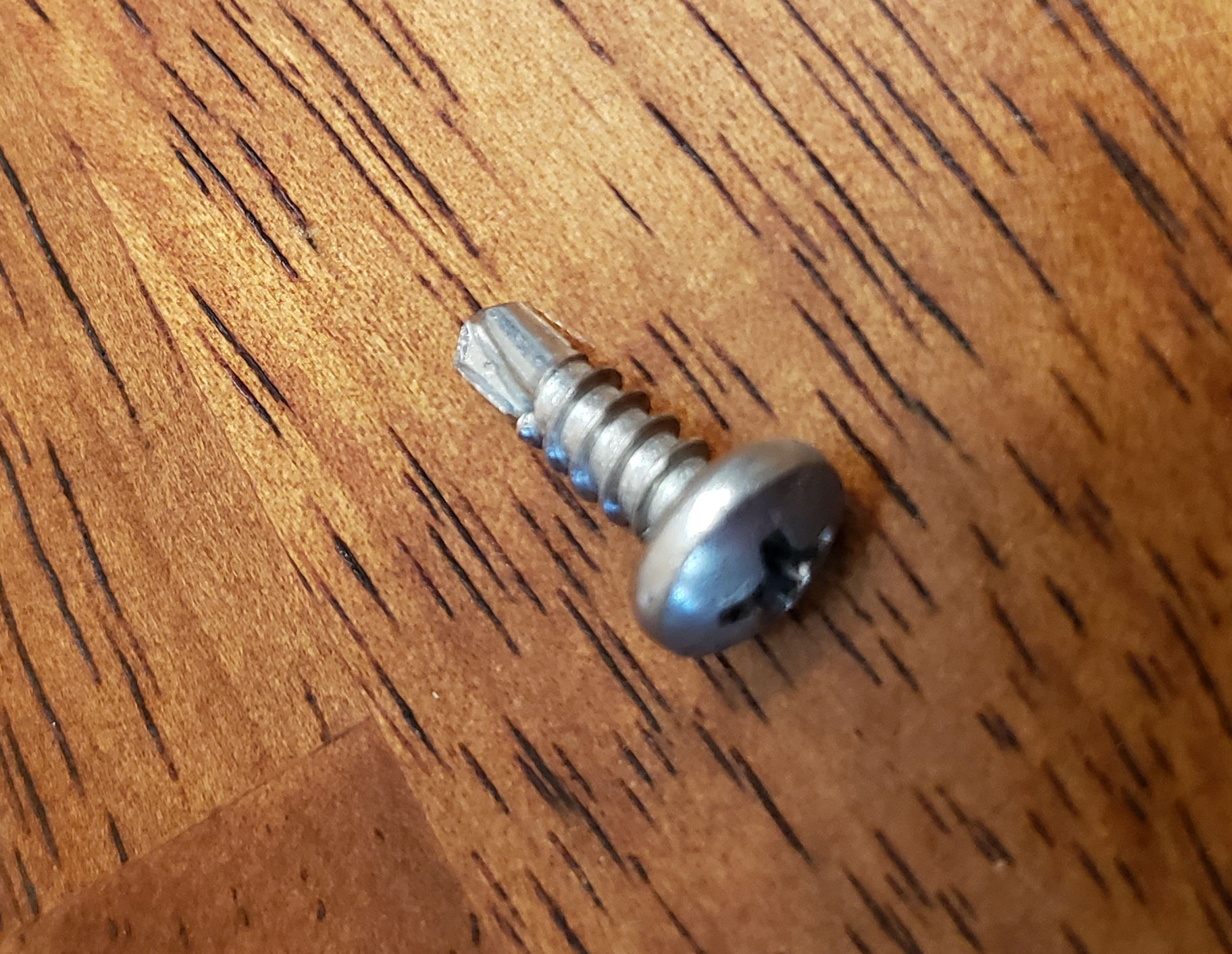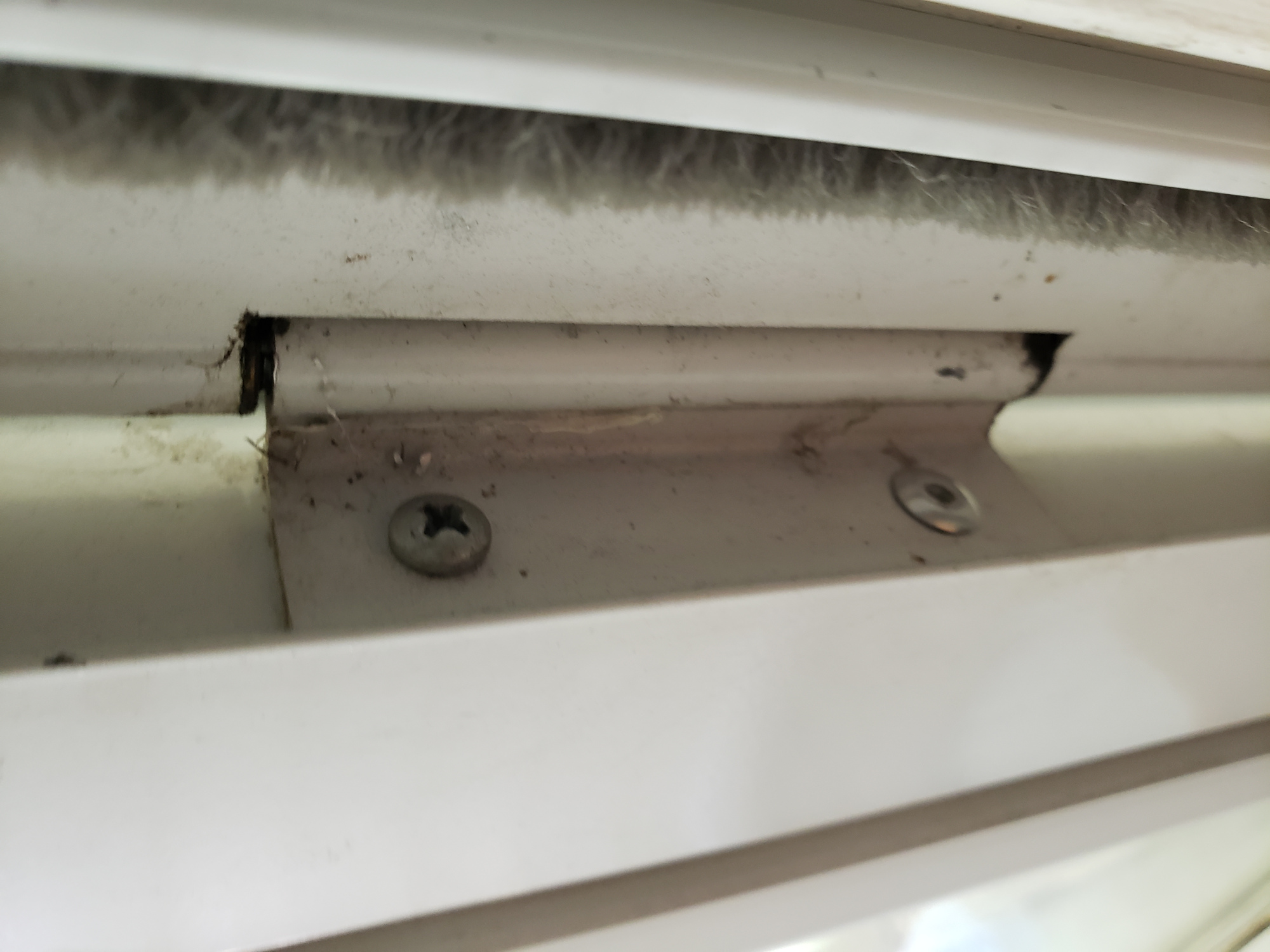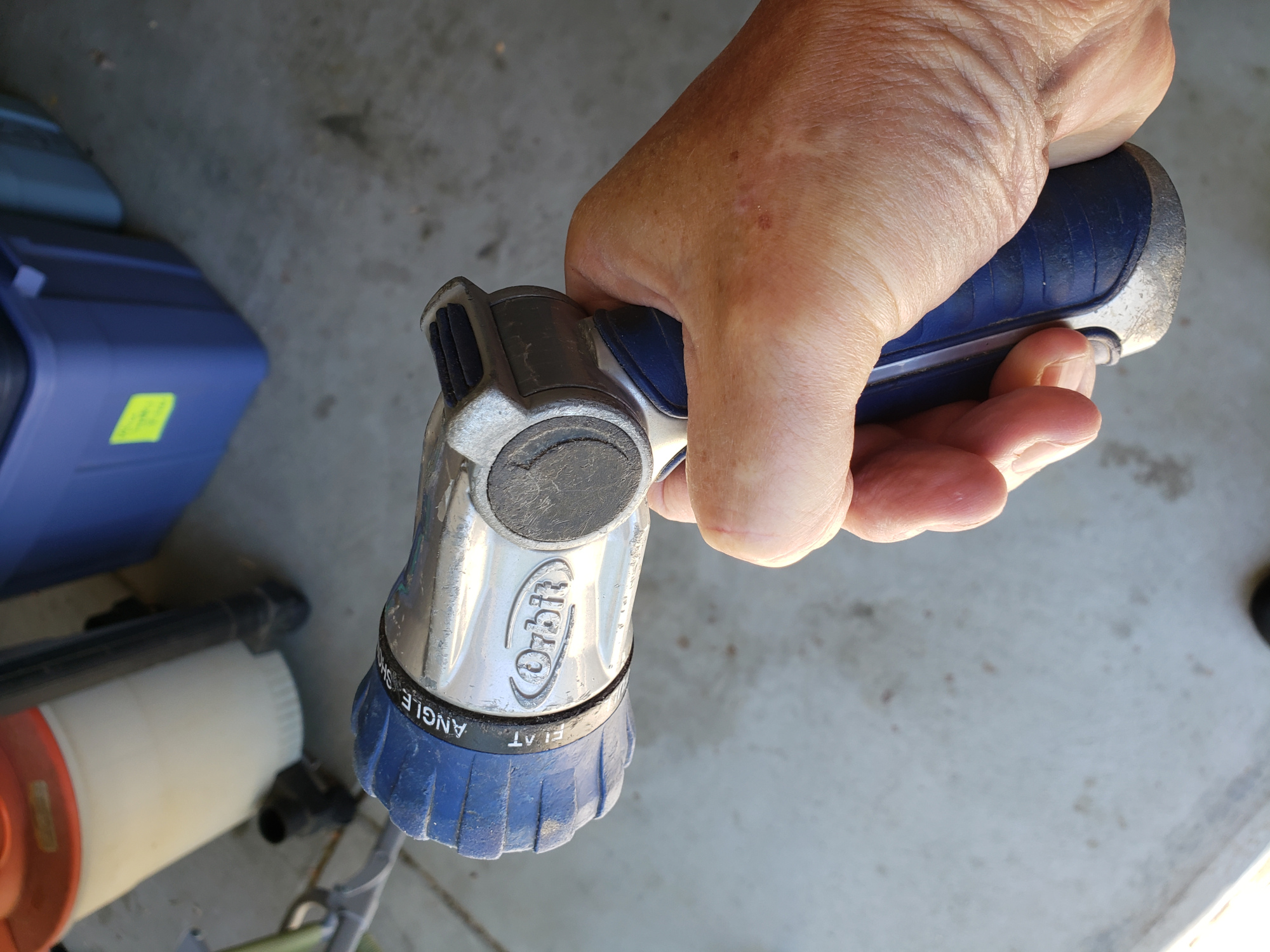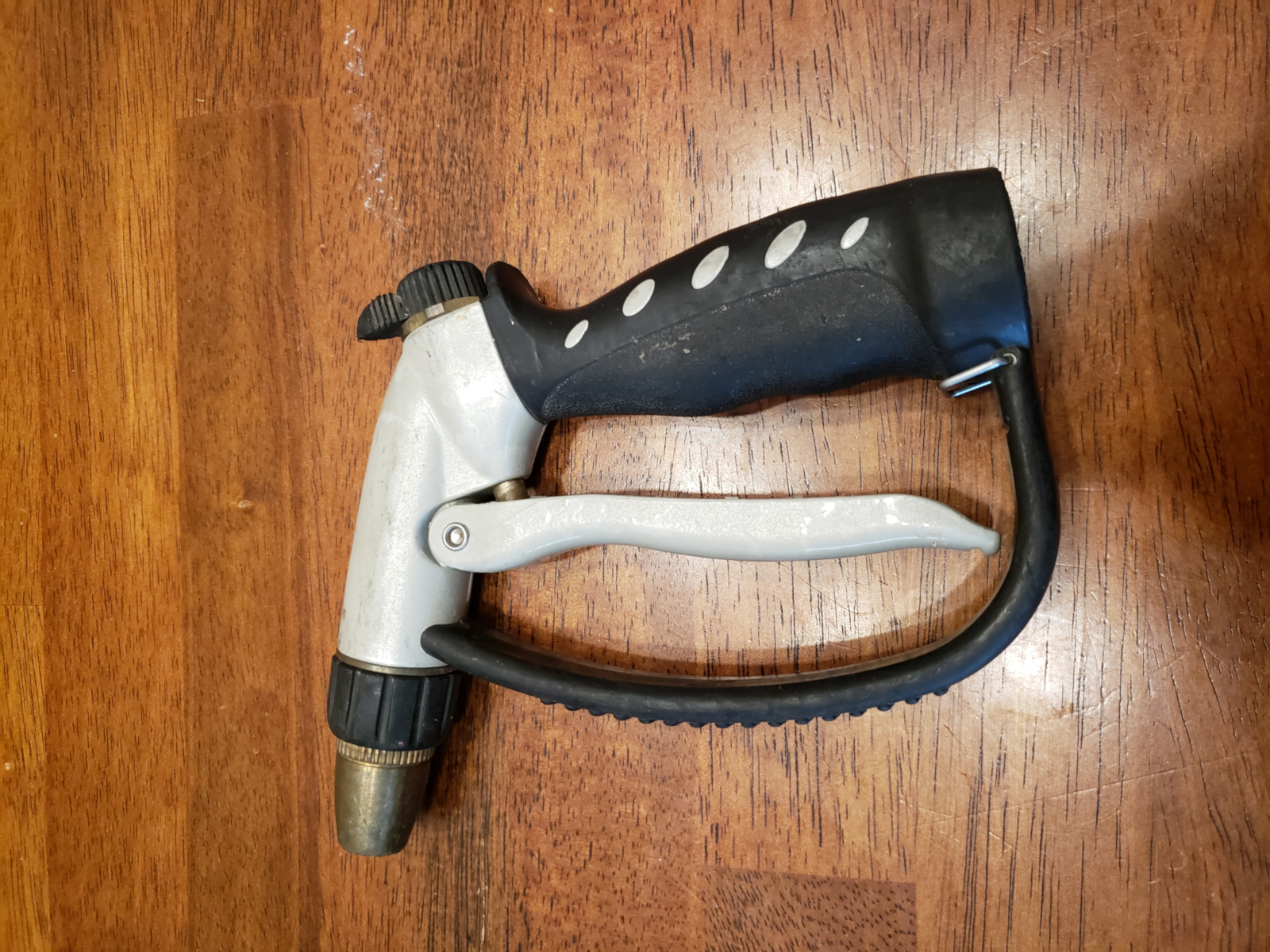 Self-tapping screws are bad on these grounds:
Self-tapping screws are bad on these grounds:
This is an occasional series of discussions of bad designs encountered while engaged on mundane tasks round the house, or while attempting repairs. Some tools for domestic purposes are staggering badly designed, and the experience of using them is just depressing. Some things are designed it seems to be devoid of logical means of repair or were designed to make repairs very difficult. Of course, your metric for bad design may vary. If your goal is to run a factory and assemble things cheaply, so people will buy them, and buy again when they break down, that presents a different set of design parameters.
Screen door hanging. The screws that hold the hinge to the door came loose over time;
they were self-tapped into a thin
duralumin channel section forming the door-frame. The door is surprisingly heavy (30-40lbs at a guess),
so the screws seem insubstantial for the task. And taking the
door off any number of times chews out the already tapped screw holes. The back side of the screw holes in the
door-frame are not easily accessible.
 Self-tapping screws are bad on these grounds:
Self-tapping screws are bad on these grounds:
 First idea was to re-hang the door with some sort of bolts, introducing nuts to bolt to inside the hollow
door-frame section, but that proved overwhelmingly fiddly to manage. The compromise fix adopted was to keep the
self-tappers for the 3 holes that seemed to be holding adequately. The other 5 were replaced with 3/16" pop-rivets
after drilling out the door-frame holes to suit. If I need to get the door off the hinge again, it will be
easy enough to drill out the pop-rivets and replace them. As an aside, it was impossible to get the
riveter in place to make the fixings with the door offered up to the hinges, so the metal door-post
needed undoing from the door opening first.
First idea was to re-hang the door with some sort of bolts, introducing nuts to bolt to inside the hollow
door-frame section, but that proved overwhelmingly fiddly to manage. The compromise fix adopted was to keep the
self-tappers for the 3 holes that seemed to be holding adequately. The other 5 were replaced with 3/16" pop-rivets
after drilling out the door-frame holes to suit. If I need to get the door off the hinge again, it will be
easy enough to drill out the pop-rivets and replace them. As an aside, it was impossible to get the
riveter in place to make the fixings with the door offered up to the hinges, so the metal door-post
needed undoing from the door opening first.
 Garden hose spray gun. This is the sort that has a stubby lever operated by thumb. The valve consists of
a plastic barrel running in an aluminum casing. The valve action gets tighter over time, with wear, metal
oxidation and perhaps swelling plastic becomes very stiff to operate, tiring and blistering the thumb.
This tightening has been seen in a sample of these spray guns. The short lever arm accentuates the root problem.
It should be possible to get the thing apart to ease the action. But the valve knuckle (barrel, sleeve and
lever) are glued together and so cannot be separated without some breakage of glued parts. At this point I cut
my losses and decided to avoid buying this design in future. Nothing for it but to chuck away the nice metal gun.
Spray guns with long lever-arm triggers and a more fixable valve mechanism are the way to go.
Garden hose spray gun. This is the sort that has a stubby lever operated by thumb. The valve consists of
a plastic barrel running in an aluminum casing. The valve action gets tighter over time, with wear, metal
oxidation and perhaps swelling plastic becomes very stiff to operate, tiring and blistering the thumb.
This tightening has been seen in a sample of these spray guns. The short lever arm accentuates the root problem.
It should be possible to get the thing apart to ease the action. But the valve knuckle (barrel, sleeve and
lever) are glued together and so cannot be separated without some breakage of glued parts. At this point I cut
my losses and decided to avoid buying this design in future. Nothing for it but to chuck away the nice metal gun.
Spray guns with long lever-arm triggers and a more fixable valve mechanism are the way to go.
 Right: A better design. I have
not
had this apart but all moving parts appear to be metal and repairable. The spring-loaded trigger is metal and
has a long lever arm. The rivet in the trigger pivot could be drilled out and replaced with a bolt
to make it easy to remove.
Right: A better design. I have
not
had this apart but all moving parts appear to be metal and repairable. The spring-loaded trigger is metal and
has a long lever arm. The rivet in the trigger pivot could be drilled out and replaced with a bolt
to make it easy to remove.
Coming soon: Toilet duck bathroom cleaning dispenser.